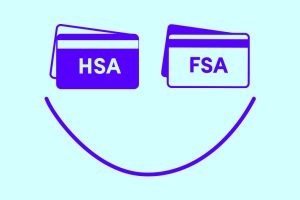Managing healthcare costs is key to family financial planning. Flexible Spending Accounts (FSAs) and Health Savings Accounts (HSAs) are strategic tools that help save for medical expenses in a tax-efficient way. They offer financial relief and security, making them vital for effective family savings strategies.
Anúncios
The benefits of FSAs and HSAs

FSAs and HSAs offer significant advantages for managing healthcare costs. Both provide tax benefits, as contributions are made pre-tax, lowering taxable income and reducing taxes owed, thus freeing up more funds for healthcare. These accounts also offer flexibility, covering expenses from prescriptions to medical equipment, making it easier for families to manage a range of healthcare costs efficiently.
HSAs have an added benefit: unlike FSAs, which typically require funds to be used within the year, HSA funds roll over annually and grow tax-free. This makes HSAs an excellent long-term savings tool for future healthcare expenses, functioning like a medical retirement fund.
Tax advantages of FSAs
The tax benefits of an FSA are one of the most compelling reasons to participate in such a program. By making contributions to an FSA pre-tax, families can reduce their adjusted gross income, effectively lowering their overall tax liability for the year. This reserved sum of money is then available to spend on eligible healthcare costs without the burden of state or federal taxes.
Furthermore, the ability of employers to contribute to an employee’s FSA amplifies the financial advantages. These contributions are also exempt from federal income taxes, Social Security tax, and Medicare tax, adding another layer of savings. This additional sum can significantly offset healthcare costs, helping families manage more extensive or unexpected medical expenses without straining their budgets.
With FSAs, families need to be mindful of the limits and deadlines associated with these accounts. The annual contribution limit is determined by the IRS, and any unspent funds at the end of the plan year typically do not carry over. However, some employers offer a grace period or allow a small carryover of unspent funds, which provides a slight cushion when planning expenses.
Long-term benefits of HSAs
HSAs offer several distinct advantages, particularly for long-term financial planning and savings. Unlike FSAs, the balances in HSAs roll over each year, allowing families to accumulate savings over time. This feature makes them particularly beneficial for those planning for future medical expenses, including those that may arise in retirement.
In addition to their tax-free withdrawal for eligible healthcare expenses, HSAs also provide an excellent retirement savings strategy. After the age of 65, account holders can withdraw funds for non-medical expenses without penalty, similar to a traditional Roth IRA. These withdrawals are subject to income tax but offer flexibility for unforeseen medical or non-medical needs.
Moreover, HSAs provide investment opportunities that can lead to potential growth in savings over time. Account holders can invest their HSA funds in various stocks, bonds, or mutual funds, thus harnessing the power of compound interest and potentially increasing their total savings. This investment growth adds another dimension to the overall long-term value and planning potential of HSAs.
Strategies for maximizing FSAs and HSAs
To make the most of FSAs and HSAs, families need thoughtful planning and management. First, accurately estimating annual medical expenses helps determine appropriate contribution levels. Reviewing past expenses, upcoming needs, and healthcare plans for all family members provides a clearer picture.
Another key strategy is meticulous tracking of expenses. Keeping medical receipts and categorizing them correctly according to IRS guidelines prevents issues with claims and audits. This record-keeping ensures compliance and maximizes the benefits of both accounts.
Taking advantage of employer contributions
Many employers offer contributions to FSAs and HSAs as part of their benefits packages, which can significantly enhance savings potential. Employers may match contributions to these accounts, similar to retirement plans, providing an immediate boost to healthcare funds.
It is essential for families to fully understand how employer contributions work, including any stipulations or conditions attached. For example, some employers may require employees to contribute a minimum amount to the account to receive the full match. Understanding these terms ensures that families can take full advantage of the benefits offered.
Maximizing employer contributions not only bolsters the account balance but also effectively extends the overall healthcare and financial planning framework. This can result in a more robust savings cushion, allowing families greater flexibility in managing and directing their healthcare resources.
Timing contributions and withdrawals
Strategically timing both contributions to and withdrawals from FSAs and HSAs is another crucial aspect of effective account management. Planning contributions around times when you anticipate high medical expenses allows families to cover costs more effectively with pre-tax dollars.
Flexible scheduling of withdrawals can also positively impact savings. For HSAs, funds could potentially be kept in the account longer to maximize investment growth and tax-free earnings, postponing withdrawals until necessary or advantageous for cost coverage.
Lastly, account holders should be conscious of potential changes in employment or health insurance plans, as these may influence account rules or eligibility. Early planning and adaptability can help maintain the efficacy and value of these savings accounts over time.






